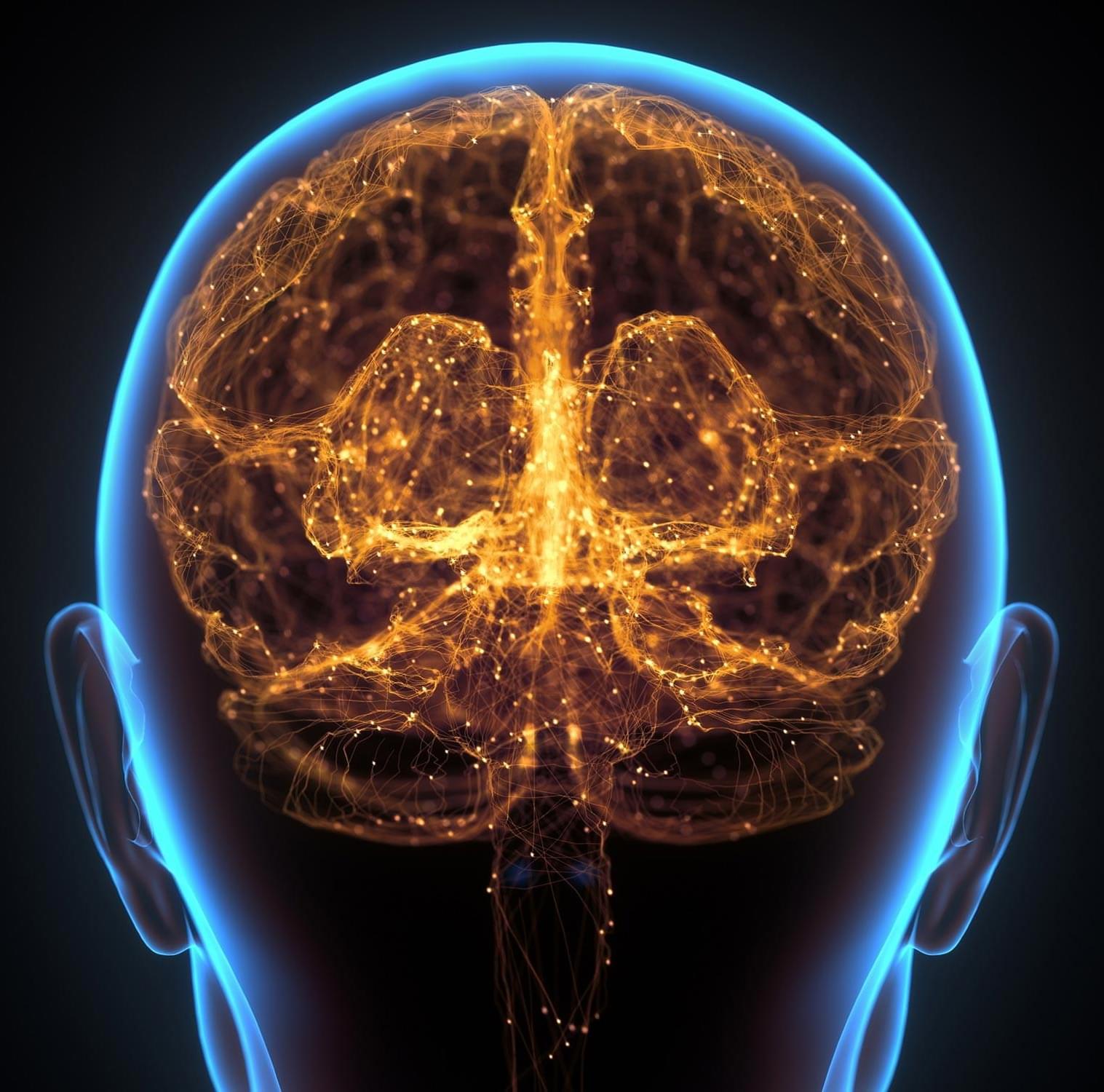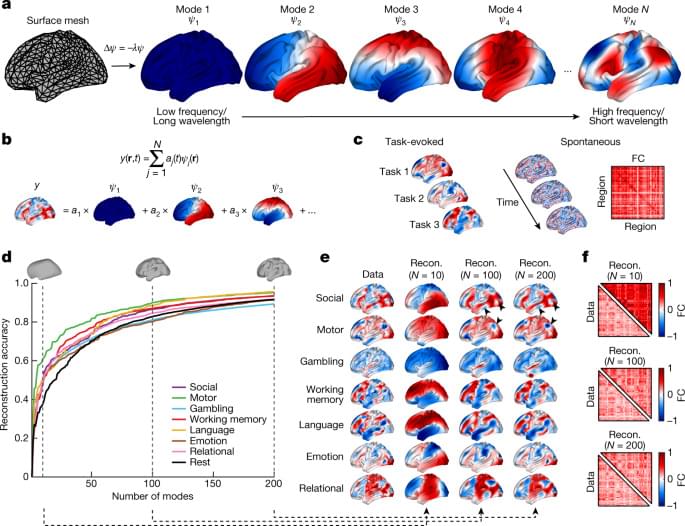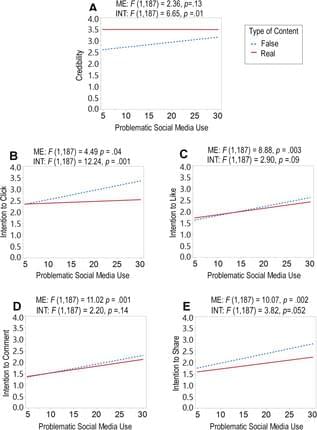Summary: New research reveals a striking gap between people’s theoretical desire to know their Alzheimer’s disease risk and their real-life decisions when results are actually offered. In a study of cognitively normal volunteers, only 60% chose to learn their estimated risk when given the chance, despite 81% expressing prior interest.
Category: neuroscience – Page 3
So size does matter?
Mammal’s lifespans linked to brain size and immune system function, says new study.
The researchers looked at the maximum lifespan potential of 46 species of mammals and mapped the genes shared across these species. The maximum lifespan potential (MLSP) is the longest ever recorded lifespan of a species, rather than the average lifespan, which is affected by factors such as predation and availability of food and other resources.
The researchers, publishing in the journal Scientific Reports, found that longer-lived species had a greater number of genes belonging to the gene families connected to the immune system, suggesting this as a major mechanism driving the evolution of longer lifespans across mammals.
For example, dolphins and whales, with relatively large brains have maximum lifespans of 39 and up to 100 years respectively, those with smaller brains like mice, may only live one or two years.
However, there were some species, such as mole rats, that bucked this trend, living up to 20 years despite their smaller brains. Bats also lived longer than would be expected given their small brains, but when their genomes were analysed, both these species had more genes associated with the immune system.
The results suggest that the immune system is central to sustaining longer life, probably by removing aging and damaged cells, controlling infections and preventing tumour formation.
Hypertension and other health risks accelerate brain aging, as shown in a 16-year study using MRI data and predictive modeling.
Chinese scientists have conducted a population-based cohort study to examine the long-term impact of unhealthy lifestyles, metabolic abnormalities, and other risk factors on brain aging. The findings showed that these factors significantly accelerate brain aging, and the researchers proposed strategies to support brain health. Their study was published in Research.
Background.
Scientists found that sleep plays an active role in transforming how memories are stored. After an immersive experience, participants remembered the order of events better after sleeping, suggesting the brain prioritizes storylines over details during deep sleep.
Cortical and subcortical activity can be parsimoniously understood as resulting from excitations of fundamental, resonant modes of the brain’s geometry rather than from modes of complex interregional connectivity.
Social media use is ubiquitous in our modern society, and some individuals display excessive, maladaptive use of these online platforms. This problematic social media use (PSMU) has been associated with greater impulsivity and risk-taking. Importantly, studies in healthy individuals have demonstrated that greater cognitive impulsivity is associated with a greater susceptibility to online “fake news.” Therefore, we hypothesized that PSMU would be associated with believing in and engaging with fake news. To address this, we conducted an online, within-subject experiment in which participants (N=189; female=102, male=86, prefer not to disclose=1; mean age=19.8 years) completed a fake news task. This task presented participants with 20 news stories (10 real and 10 false, in random order) formatted as social media posts. We assessed participants’ credibility judgments of these news posts, as well as participants’ intentions to click, like, comment, and share these posts. We also assessed participants’ degree of PSMU and then related this measure to their performance in our task. We conducted a repeated measures analysis of variance (ANOVA) with a mixed model approach, and it revealed that the greater one’s PSMU, the more one finds specifically false news credible. We also found that the greater one’s PSMU, the greater one’s engagement with news posts, agnostic to the type of content (real or false). Finally, we found that the greater one’s PSMU, the greater one’s intent to click on specifically false news. Our research demonstrates that individuals who experience the most distress and impairment in daily functioning from social media use are also the most susceptible to false information posted on social media. We discuss the clinical implications of our findings.
Citation: Meshi D, Molina MD (2025) Problematic social media use is associated with believing in and engaging with fake news. PLoS ONE 20: e0321361. https://doi.org/10.1371/journal.pone.
Editor: Stefano Cresci„ National Research Council (CNR), ITALY
Long used in Indigenous Brazilian rituals, the jurema preta plant, which contains a potent psychedelic, is gaining ground as a potential treatment for depression.
Until now, only expensive and slow electron microscopes could reach this level of detail. But LICONN opens the door for more labs around the world to explore the brain’s cellular “wiring diagram” using tools they already have. It’s like giving everyone a high-powered zoom lens for decoding how the brain works, learns, and perhaps breaks down in disease.
In collaboration with the Institute of Science and Technology Austria (ISTA), we published in Nature the first-ever method for using light microscopy to comprehensively map all the neurons and their connections in a block of brain tissue. The key finding from this validation experiment is that this approach works as well as electron microscopy-based connectomics.
Our brain is a complex organ. Billions of nerve cells are wired in an intricate network, constantly processing signals, enabling us to recall memories or to move our bodies.
Making sense of this complicated network requires a precise look into how these nerve cells are arranged and connected. “LICONN,” a new microscopy method developed by scientists at the Institute of Science and Technology Austria (ISTA) and Google Research, now helps piece together this puzzle.
Light microscopes have been evolving for centuries. Scientists use light microscopy to—literally and figuratively—illuminate the most intricate biological structures. However, unraveling the complex details and architecture of the brain remains a seemingly impossible challenge, considering its billions of densely packed neurons, each linked to other cells via thousands of synapses.
A team of Harvard researchers have unveiled a way to map the molecular underpinnings of how learning and memories are formed, a new technique expected to offer insights that may pave the way for new treatments for neurological disorders such as dementia.
“This technique provides a lens into the synaptic architecture of memory, something previously unattainable in such detail,” said Adam Cohen, professor of chemistry and chemical biology and of physics and senior co-author of the research paper, published in Nature Neuroscience.
Memory resides within a dense network of billions of neurons within the brain. We rely on synaptic plasticity—the strengthening and modulation of connections between these neurons—to facilitate learning and memory.








